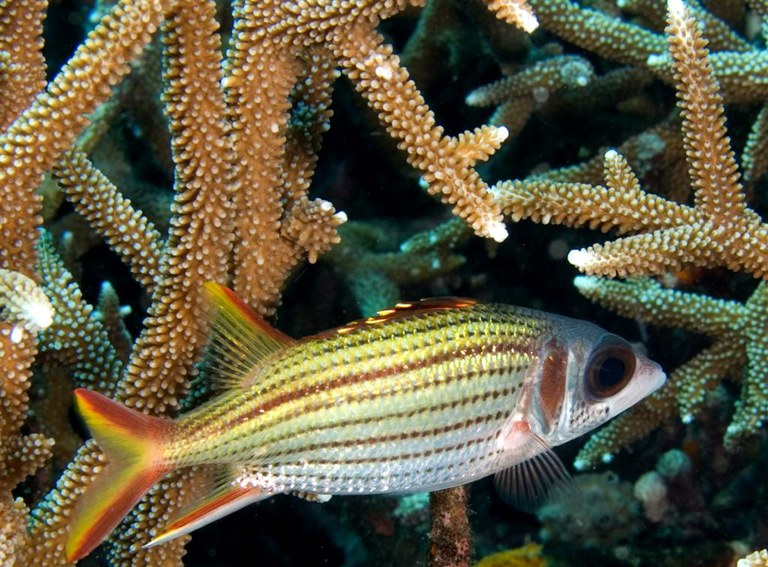Reefbuilders reported yesterday that the research paper “Effects of phosphate on growth and skeletal density in the scleractinian coral Acropora muricata: A controlled experimental approach” by Dunn, Sammarco, and LaFleur Jr was just published in the January 2012 issue of the Journal of Experimental Marine Biology and Ecology.
In this study, researchers wanted to understand what would happen to a fast growing scleractinian coral under varying phosphate levels. For their study, they chose the fast growing acroporid, Acropora muricata, varied phosphate levels (0.05, 0.20, and 0.50 mg/L), and measured:
- total skeletal length
- living tissue length
- weight and density
- branch production
- polyp extension
The interesting thing about this study was that the researches expected the growth rates to decrease as phosphate levels increased. As it turns out, for Acropora muricata this hypothesis proved to be false.
They found the greatest growth rates at the highest phosphate levels (0.50 mg/L). Conversely, they found skeletal density decreased with increasing phosphate levels. Living tissue length and polyp extension were good for all phosphate levels and no stress or mortalities resulted during the four month test. Branch production was not observed to be different nor was there a difference in polyp extension when comparing phosphate levels.
The researchers believe that the increased growth was due to a larger overall density of zooxanthellae in the 0.5 mg/L group.
Notes on the experimental setup
I always like reading the details about the experiment, so here they are:
Live Aquaria was the source of the five wild heads of A.muricata used in this study.
-

- Frags mounted to PVC.
When received, each of the five heads were fragged, mounted to PVC using epoxy, and then randomly secured to three submersible PVC structures which were then placed into the study tanks. (right)
Three 30-gallon aquariums were used for the study:
- Flow: two Maxi-Jet 1200 powerheads powered by a Maxi-Jet Natural Wavemaker System, 20 sec interval; one Hagen Aqua Clear 50
- Skimmer: CPR Bak-Pak 2R fitted with liverock in the return chamber
- Heater: 250 watt Visi-Therm Stealth
- UV Sterilizer: Coralife Turbo Twist 9 watt
- Lighting: two 400 watt 10,000 K Ushio bulbs powered by a PFO ballast; two 160 watt VHO actinic bulbs; 12 hrs on / 12 hrs off for actinics and 5 hrs for metal halide
Below is the configuration of the tanks in the study:

Phosphate levels were measured thrice weekly in addition to ammonia, nitrite, pH, salinity, and temperature. Calcium and nitrate were measured weekly. Throughout the study, ammonia was undetectable (0.00 mg/L) and nitrite and nitrate were negligible (0.03-0.09 mg/L and 0.11-0.13 mg/L respectively). Temperature stayed at ~25 C, salinity at ~34-35 ppt, pH at ~8.25, and calcium at ~365 ppm.
Remarks
Keep in mind that this finding has only been documented for Acropora muricata. While this may or may not prove true for other scleractinian corals, more research needs to be done in this area before any definitive conclusions can be drawn.
Don’t run out and purchase inorganic phosphate to start dosing your tanks. 😉










0 Comments